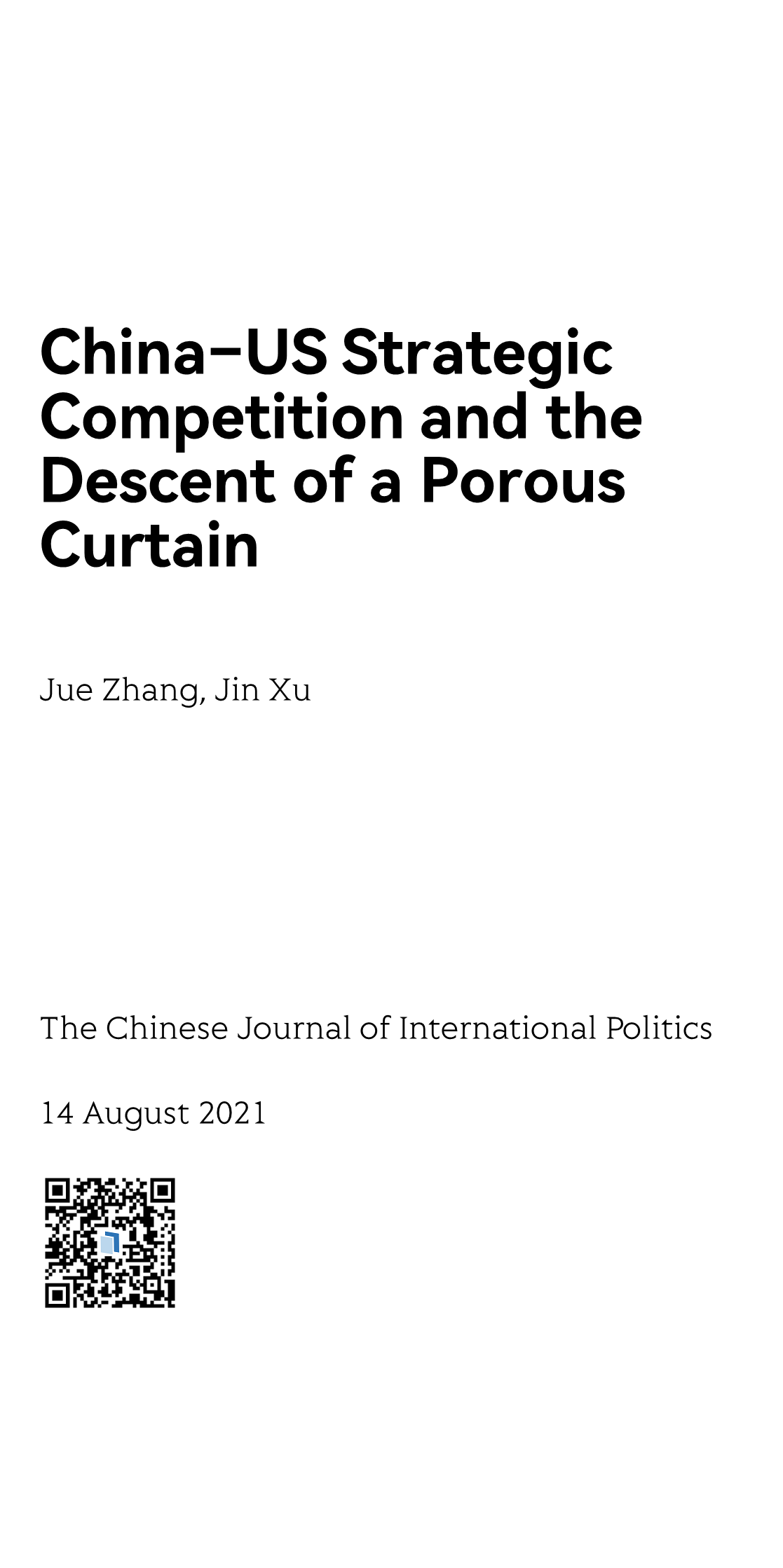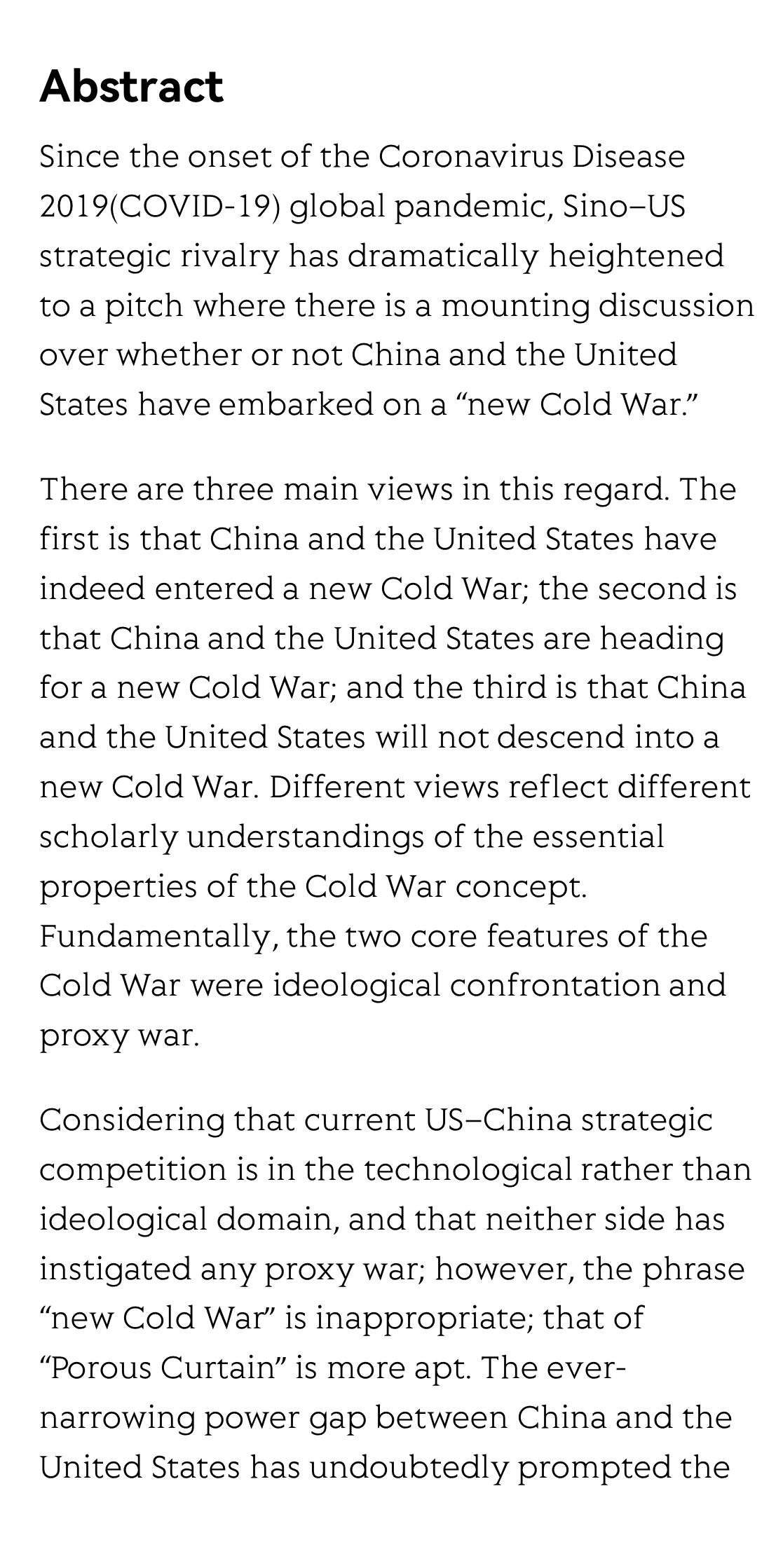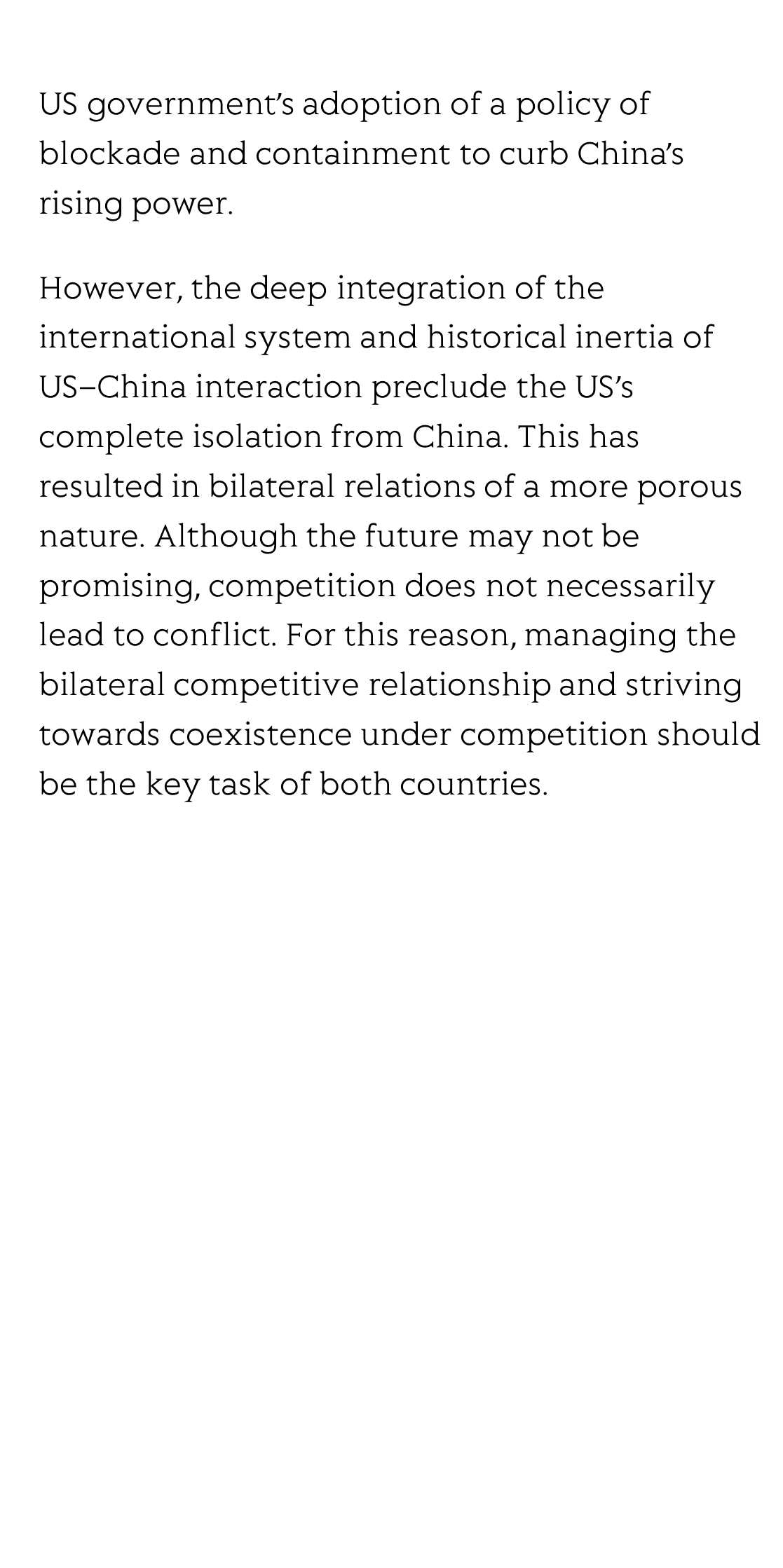(Peer-Reviewed) China–US Strategic Competition and the Descent of a Porous Curtain
Jue Zhang ¹, Jin Xu 徐进 ²
¹ School of International Relations, Peking University 北京大学 国际关系学院
² Institute of World Economics and Politics, Chinese Academy of Social Sciences 中国社会科学院 世界经济与政治研究所
The Chinese Journal of International Politics, 2021-08-14
Abstract
Since the onset of the Coronavirus Disease 2019(COVID-19) global pandemic, Sino–US strategic rivalry has dramatically heightened to a pitch where there is a mounting discussion over whether or not China and the United States have embarked on a “new Cold War.”
There are three main views in this regard. The first is that China and the United States have indeed entered a new Cold War; the second is that China and the United States are heading for a new Cold War; and the third is that China and the United States will not descend into a new Cold War. Different views reflect different scholarly understandings of the essential properties of the Cold War concept. Fundamentally, the two core features of the Cold War were ideological confrontation and proxy war.
Considering that current US–China strategic competition is in the technological rather than ideological domain, and that neither side has instigated any proxy war; however, the phrase “new Cold War” is inappropriate; that of “Porous Curtain” is more apt. The ever-narrowing power gap between China and the United States has undoubtedly prompted the US government’s adoption of a policy of blockade and containment to curb China’s rising power.
However, the deep integration of the international system and historical inertia of US–China interaction preclude the US’s complete isolation from China. This has resulted in bilateral relations of a more porous nature. Although the future may not be promising, competition does not necessarily lead to conflict. For this reason, managing the bilateral competitive relationship and striving towards coexistence under competition should be the key task of both countries.
Flicker minimization in power-saving displays enabled by measurement of difference in flexoelectric coefficients and displacement-current in positive dielectric anisotropy liquid crystals
Junho Jung, HaYoung Jung, GyuRi Choi, HanByeol Park, Sun-Mi Park, Ki-Sun Kwon, Heui-Seok Jin, Dong-Jin Lee, Hoon Jeong, JeongKi Park, Byeong Koo Kim, Seung Hee Lee, MinSu Kim
Opto-Electronic Advances
2025-09-25
Dual-frequency angular-multiplexed fringe projection profilometry with deep learning: breaking hardware limits for ultra-high-speed 3D imaging
Wenwu Chen, Yifan Liu, Shijie Feng, Wei Yin, Jiaming Qian, Yixuan Li, Hang Zhang, Maciej Trusiak, Malgorzata Kujawinska, Qian Chen, Chao Zuo
Opto-Electronic Advances
2025-09-25





